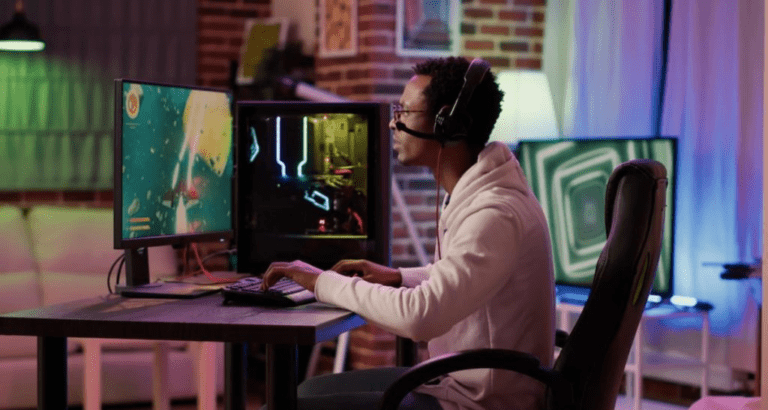Takeaway
Integrating external game development support can significantly enhance a studio’s capabilities, streamline workflows, and foster innovation. By leveraging specialized skills and resources, studios can focus on core competencies while ensuring high-quality game production. This article delves into the methodologies, best practices, and strategic considerations for effectively incorporating external support into game development processes.
Understanding the Need for External Support
The landscape of game development is evolving rapidly, with increasing demands for high-quality graphics, immersive gameplay, and cross-platform compatibility. As studios strive to meet these expectations, the need for external support becomes evident. External game development support can take various forms, including outsourcing specific tasks, collaborating with specialized studios, or engaging freelance talent. Each of these options presents unique advantages and challenges that studios must navigate.
Types of External Support
When considering external support, studios can explore several avenues:
- Outsourcing: This involves delegating specific tasks or entire projects to third-party companies. Outsourcing can be particularly beneficial for non-core activities such as art asset creation, sound design, or quality assurance.
- Collaboration: Partnering with other studios can lead to shared resources and expertise. This approach is often used for co-developing larger projects or when entering new markets.
- Freelancers: Hiring freelance professionals allows studios to tap into specialized skills on a temporary basis. This flexibility can be advantageous for short-term projects or specific tasks that require niche expertise.
Strategic Considerations for Integration
Integrating external support into a game development pipeline requires careful planning and execution. Here are key strategic considerations:
1. Define Clear Objectives
Before engaging external support, studios must establish clear objectives. What specific goals do you aim to achieve? Whether it’s reducing development time, enhancing game quality, or accessing specialized skills, having well-defined objectives will guide the selection of external partners and the scope of work.
2. Assess Internal Capabilities
Understanding your studio’s strengths and weaknesses is crucial. Conduct a thorough assessment of your internal capabilities to identify areas where external support is needed. This evaluation should encompass technical skills, project management capabilities, and resource availability.
3. Choose the Right Partners
Selecting the right external partners is critical to the success of integration. Consider the following factors:
- Expertise: Ensure that the partner possesses the necessary skills and experience relevant to your project.
- Reputation: Research potential partners’ past work and client testimonials to gauge their reliability and quality of output.
- Communication: Effective communication is vital for collaboration. Choose partners who demonstrate transparency and responsiveness.
4. Establish Clear Contracts and Agreements
Legal agreements should outline the scope of work, timelines, payment structures, and intellectual property rights. Clear contracts help mitigate risks and set expectations for both parties. It’s advisable to involve legal counsel to ensure that all agreements are comprehensive and enforceable.
5. Foster Collaboration and Communication
Once external support is engaged, fostering a collaborative environment is essential. Utilize project management tools and communication platforms to facilitate seamless interaction between internal and external teams. Regular check-ins and updates can help maintain alignment and address any issues promptly.
Best Practices for Integration
To maximize the benefits of external support, studios should adopt best practices that enhance integration:
1. Maintain Quality Control
Quality assurance should remain a priority throughout the development process. Establish clear quality standards and conduct regular reviews of external work to ensure it meets your studio’s expectations. Implementing a robust feedback loop can help identify areas for improvement and maintain high standards.
2. Leverage Technology
Utilizing technology can streamline collaboration with external partners. Tools such as version control systems, project management software, and communication platforms can enhance workflow efficiency. For instance, using Git for version control allows multiple teams to work on the same codebase without conflicts.
3. Encourage Knowledge Transfer
External partners often bring unique insights and expertise. Encourage knowledge transfer by involving them in team meetings, workshops, or training sessions. This not only enhances the skills of your internal team but also fosters a sense of unity and collaboration.

4. Monitor Progress and Adapt
Regularly monitor the progress of external contributions against established objectives. Be prepared to adapt your strategy based on performance metrics and feedback. Flexibility is key to addressing challenges and ensuring that the integration remains aligned with project goals.
Challenges and Solutions
While integrating external support can yield significant benefits, it is not without challenges. Here are common obstacles and potential solutions:
1. Communication Barriers
Differences in time zones, languages, and cultural practices can lead to communication challenges. To mitigate this, establish clear communication protocols and designate points of contact for both internal and external teams. Regular video calls can also help bridge gaps and foster better understanding.

2. Quality Inconsistencies
External contributions may vary in quality, leading to inconsistencies in the final product. To address this, implement stringent quality control measures and provide detailed guidelines to external partners. Regular feedback sessions can also help align expectations.
3. Intellectual Property Concerns
Engaging external partners raises concerns about intellectual property (IP) rights. To protect your studio’s IP, ensure that contracts clearly define ownership rights and confidentiality agreements. It’s advisable to consult with legal experts to navigate these complexities.
Conclusion
Integrating external game development support can be a transformative strategy for studios looking to enhance their capabilities and streamline production processes. By defining clear objectives, assessing internal capabilities, choosing the right partners, and fostering collaboration, studios can effectively leverage external resources. While challenges may arise, adopting best practices and maintaining open communication can lead to successful integration. Ultimately, the key to maximizing the benefits of external support lies in strategic planning and execution.
Key Points
- Define clear objectives before engaging external support.
- Assess internal capabilities to identify areas for external assistance.
- Choose partners based on expertise, reputation, and communication skills.
- Establish clear contracts to mitigate risks and set expectations.
- Foster collaboration through effective communication and technology.
- Maintain quality control and encourage knowledge transfer.
- Be prepared to adapt strategies based on performance metrics.
By following these guidelines, game development studios can successfully integrate external support, leading to enhanced productivity, innovation, and ultimately, better games.

